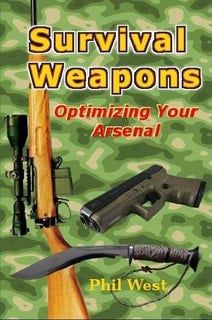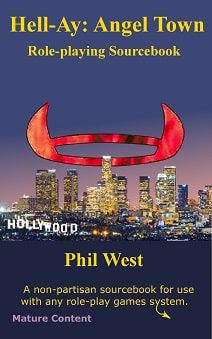Added 29-9-15
Updated 9-4-24
Future Infantry Platoons and Companies
In a previous article, I made some conjectures about the infantryman of the near future. In this article I intend to make some suggestions about the structure of future infantry formations. A primarily inspiration for this article was from reading William Owen’s “Patrol Based Infantry Doctrine”. At around the same time I had be toying with a thought experiment that revolved around organizations in conflict mainly using raiding and sabotage against each other. The latter obviously had me thinking about ways to counter the operations of raiders and saboteurs. One potential option was for security forces that themselves are familiar with skills such as tracking, sabotage and infiltration. It was obvious that the success of such operations would depend on effective patrolling. Patrolling is about observation. You cannot observe much if you are speeding through the terrain in a HMMWV. Patrolling infantry need to operate dismounted.
Owen notes that it is common to describe infantry by a means of transport: airborne, paratroop, marine, airmobile, armoured, mechanized etc. But transport is just that, something to move you to where you need to be. Once out of the transport, all infantry are effectively light infantry. Even “special forces” are inherently light infantry with better resources to draw their personnel and equipment from.
Just What Are Light Infantry?
“Light infantry” means different things to different armies. Tactically, all infantrymen fight dismounted. “Light infantry” or “light-role infanty” commonly designates a force that lacks organic armoured vehicles. This once meant light (role) infantry relied on their feet for strategic mobility too. In modern practice, a light infantry unit often has an assortment of poorly protected trucks and HMMWVs, which it may not have the resources to maintain. “Light” should be a scale of issue, not a philosophy.
Light infantry are one of a commander’s most flexible and versatile battle systems. It is often repeated that light infantry can operate in nearly any terrain but the full implications of this are often overlooked. True, infantry can operate in vehicle-unfriendly terrain such as jungle, woodland and mountains. They can also go most places in an urban environment. War is a human activity and urban areas are where most people live and operate. Few conflicts can be won by simply dropping a bomb on something. First you need to find your target. You need men who can peek over fences, search rooms, attics and basements, frisk suspects and a score of other human to human interactions. Russian experiences in Grozny clearly reiterated the folly of using armoured vehicles in close terrain without the support of a dismounted infantry screen. They also illustrated how effective dismounted infantry can be against armoured vehicles in such terrain. Light infantry are useful in the full range of military operations, from humanitarian aid to major theatre warfare.
Patching Infantry
In other articles I have talked about what I call “patch” formations. A patch formation is just a collection of vehicles and crewmen and the resources needed to keep them running. If you provide a light infantry company with a patch unit of IFVs it becomes an armoured infantry company. Patch it with trucks and it becomes motorized. Patch it with helicopters and it becomes an air-assault company and so on. Suppose we take this idea to its logical conclusion. Infantry forces are all trained as light infantry. Potentially any infantry company can be reconfigured as an armoured, air assault, riverine force etc just by the addition of the appropriate transport unit. Likewise more specialized infantry forces can be converted to a light infantry role just by the omission of their transport platoons.
For the infantry to use this concept and still be as flexible and versatile as they need to be there may need to be a few changes in training and organization. The obvious one is that troops need to be familiar with operating with armoured vehicles and helicopters. This should be fundamental to all basic training already. As Owen suggests, training should place particular emphasis on fieldcraft, tracking, navigation and observation. Physical training should emphasize combat relevant activities such as crawling, stalking, marching, sprinting, entrenching and close combat techniques.
Military operations will often involve interaction with non-military personnel. Infantry need to be trained to be familiar with subjects such as psychology, body language and the use of Less-Lethal Weapons (LLW). Infantry like to think their role is “killing the bad guys”. Often the real challenge is finding the bad guys.
Field Teams and Platoons
 Owen has suggested that the building block of the platoon becomes a five-man “team”. [In other articles I have suggested six-man teams that can easily operate as pairs or trios. Owen has called a six-man team a “worst case”, so in deference to this I have written this article assuming a five-man unit. Optimum team size is a much discussed topic in sociology. The answer depends on intended role but a common answer is five to seven persons, seven plus or minus three or “single figures”]. One advantage of this is that such a unit can fit inside some of the less capacious military vehicles such as Land Rovers and some IFVs. Five men in the back of an IFV leaves room for additional passengers/prisoners or extra equipment/munitions.
Owen has suggested that the building block of the platoon becomes a five-man “team”. [In other articles I have suggested six-man teams that can easily operate as pairs or trios. Owen has called a six-man team a “worst case”, so in deference to this I have written this article assuming a five-man unit. Optimum team size is a much discussed topic in sociology. The answer depends on intended role but a common answer is five to seven persons, seven plus or minus three or “single figures”]. One advantage of this is that such a unit can fit inside some of the less capacious military vehicles such as Land Rovers and some IFVs. Five men in the back of an IFV leaves room for additional passengers/prisoners or extra equipment/munitions.
Five “field teams” and a HQ team form a “field platoon”. The HQ team is the platoon leader, platoon sergeant, a signaller, medic and a couple of riflemen. I am assuming that the platoon sergeant will in practice be with one of the field teams. The riflemen can act as messengers in the event of signal jamming or eavesdropping.
Preferably the HQ team will include a platoon sniper with a .338 rifle. The capability of the .338 rifle would be enhanced by the development of a multiple effect anti-material round in this calibre.
Depending on mission, the platoon may include a number of attached personnel such as additional medics and JUS (Joint Universal Spotters) and drone/UAV operators.
The HQ team is the obvious place that information from platoon RPV systems is processed. It is also desirable that the burden of piloting of such devices is not placed on the field teams, who need to remain aware of their own surroundings. Additional personnel in the HQ team may be needed to manage RPV and sensor systems.
A platoon or derived patrol will most likely have systems for local airborne reconnaissance, such as small UAVs. Certain missions may see the formation utilizing loitering munitions and “cargo/bomber” drones.
Whether such systems and their operators should be organic to the platoon or the company, or attached as needed, and the best size for such an element, remains to be determined.
Team Armament
The organic armament of the field team needs to be effective and versatile without compromising their dismounted mobility. Basic weapon will be an assault rifle or battle-carbine, variants including a heavy-barrelled support version and a grenade launcher variant. Ideally this would use a cartridge similar to the 6.5mm MPC or 6.6mm GPC for increased potential.
Rifles/carbines would be complemented by a disposable anti-tank/anti-armour launcher system. This might in fact be a family of systems based around something along the lines of the Chinese PF-89 or Matador. There would be smaller and larger-calibre variants, and a variety of warhead types.
Team weapons may be redistributed within a team to increase or decrease the armament of individual teams. A heavily armed team could be utilized as a base-of-fire, while a lighter team would be better suited to more mobile roles.
For operations such a reconnaissance or MOOTW, heavier weapons than these may not be needed. If the team is operating with vehicles. the vehicle-mounted weapons offer superior firepower to man-portable systems.
Platoon Weapons
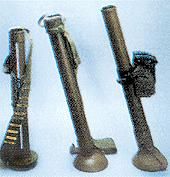 A number of weapons are allocated to the platoon and issued to teams as needed. The platoon has available at least one 60mm “commando” mortar (aka “patmor” or “patrol mortar”) and a number of GPMGs and ATGWs.
A number of weapons are allocated to the platoon and issued to teams as needed. The platoon has available at least one 60mm “commando” mortar (aka “patmor” or “patrol mortar”) and a number of GPMGs and ATGWs.
Machine guns that remain stationary for too long are likely to attract fire from RPGs and similar weapons. Frequent changes of position will favour the use of lighter weapons, such as the Negrev NG7 (7.95kg), Mk48 (8.2kg) and 6.6mm equivalents of the M27. Use of suppressors on machine guns will make firing positions harder to locate. Frequent shifts of firing position may mean GPMG tripods are seldom likely to see use.
WW2 Japanese rifle platoons had a section with three or four “knee-mortars”.
A case can be made for allocating two commando mortars to each platoon and at least four GPMGs.
ATGWs might be something along the lines of the Israeli Spike.
There are also a number of box-magazine shotguns available for use with LLW ammunition or for special situations. A few compact and silenced SMGs may also be available for each platoon. Rather than being the organic armament of distinct teams, all these weapons are allocated to a team as needed, depending on perceived mission and terrain.
A number of men in each platoon have advanced training for the the mortar or ATGWs.
All men will have some familiarity with the GPMG, with a percentage being given advanced training.
At least one team in each platoon are trained as assault-pioneers.
The field platoon proposed above is a relatively homogeneous formation yet has the capability of being task customized by the provision of extra weapons or transportation. A field platoon is therefore around 30+, not including vehicle crews. A platoon structure of a HQ section and six teams offers the option of operating as three squads for use of “traditional” platoon tactics.
There are precedents for the proposed team structure. In Northern Ireland troops patrolled as four-man “bricks”. Two or more bricks were termed a “multiple”. A platoon can form one or more multiples as the situation requires. When greater specificity is needed, a three-man unit is termed a “triad”, a four-man a “quad” and a five a “pentad”. A six-man team would usually move as two triads, or a pair and a quad.
Battle Groups and Task-Forces
An article on the future of the British army notes:
“It would be unusual for the infantry to fight as battalion units especially in armoured or mechanized formations. If the task is appropriate, the HQ of an infantry battalion will become the HQ of a ’battle group’, and be provided with armour, artillery, engineers and possibly aviation to enable it to become a balanced Battle Group. Similarly Infantry Companies can be detached to HQs of Armoured Regiments to make up Armoured Battle Groups.”
This has two interesting implications:
- The first is that the basic building block of the battle group is the company/squadron. These in turn must be so structured that they can be divided into functional platoon/troop units for the creation of task-forces.
- The second is that the infantry battalion HQ company must in fact be organized so it can serve as a mixed-arms battle group command element.
The battle group/task-force concept means that there is little point in designing an infantry battalion TOE as a field force when companies and platoons will be the operational elements.
The use of infantry companies in this way will have an influence on their organization. For example, US Army and USMC companies have a company-level mortar element of two 60mm mortars. A battle-group or task-force will most likely be allocated a contingent of heavier mortar systems. The battle-group/task-force also has FOO and MFC elements that theoretically allow the formation to call upon the fires of any friendly mortar or artillery system within range of the intended target. For many smaller scale operations where the infantry company may operate more independently, the organic company mortars are not needed and the mortarmen in fact end up serving as extra riflemen anyway.
Field Company Structure
I am, however, reluctant to suggest a field company only composed of field platoons and a HQ platoon.
Company STA Section
One asset I would consider is a “Company STA section”. While all field teams are trained for reconnaissance and surveillance missions, the Coy-STA section is directly under company HQ platoon control. It may, in fact, be considered part of the HQ platoon. In a task-force, the Coy-STA supplements any armoured reconnaissance detachments. Many of the Coy-STA members would be snipers or scout-snipers, so Coy-STA teams may also be tasked with supporting field platoon operations. Coy-STA will also be trained as JUS (Joint Universal Spotters).
Company Armoury Section
The other company-level asset is the “Company Armoury section”. The main role of the Coy-Armoury section is administration and maintenance of the ATGWs available to the field platoons. The Coy-Armoury would also have available a pair of direct-fire support launchers. The Carl Gustav MAAW would be the “off-the shelf” choice, although something a little bigger and longer-ranged would be desirable. So too would be a round with a short time of flight, such as that of the Italian Foglore, which is a recoilless gun with a rocket sustainer motor in its round. The 120mm Chinese “Queen Bee” PF-98 is essentially a SMAW on steroids, also resembling in some respects a larger version of the RPG-29, RPG-32 or M79 Osa. Something along these lines with a suitable range of ammunition would be useful for operations where ATGWs are not necessary. One role for such weapons would be to provide a long-ranged system for “mouse-holing” buildings for infantrymen. Available ammunition should include HEDP and WBM (Wall Breach Munitions).
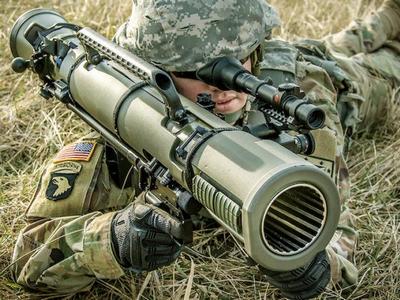 The fourth-generation (M4/CGM4) variant of the Carl Gustav may meet the above criteria. Launcher weight has been reduced to 7 kg. Some unguided Carl Gustav rounds have an engagement range of 1,500 metres. The laser-guided round being developed is expected to extend range to 3,000 metres.
The fourth-generation (M4/CGM4) variant of the Carl Gustav may meet the above criteria. Launcher weight has been reduced to 7 kg. Some unguided Carl Gustav rounds have an engagement range of 1,500 metres. The laser-guided round being developed is expected to extend range to 3,000 metres.
It would be desirable if some of the Coy-Armoury section had training and equipment for demolitions and breaching operations, supplementing the assault-pioneers in the field platoons.
Assuming the Coy-STA and Coy-Armoury as components of a small HQ platoon, then three or four field platoons gives a company strength of around 140-165 people, consistent with Dunbar’s Number theory. In “Race to the Swift” (p.216) Simpkin notes that “In the British Army at least, the upper focus of the junior ranks’ loyalty is almost certainly the company” and “The key object of loyalty in achieving coherent behaviour under fire is almost certainly the company”
In “Mechanized Infantry” p.111, Simpkin describes another idea that could be incorporated into future force structures. Numerous defence cuts have resulted in many honoured and historic regiments of the British Army being effectively “merged into oblivion”.
Simpkin suggests a more acceptable approach may have been to condense regiments from battalion to company size.
On a related note, he suggests that a slightly enlarged company (about 225 men) might be a more practical administrative unit for modern operations, with a battalion headquarters having only a tactical function.
Heavy Companies
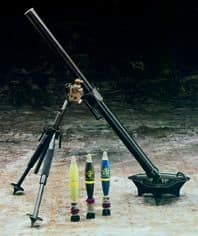
The earlier passage raises the question as to where the battle group/task-force gets its heavier mortars?
In addition to its field companies, an infantry allocation may include one or more “heavy companies”.
The heavy company is structured so that it or its sub-units may be attached to other forces.
The heavy company contains both 60mm and 98mm mortars.
The 60mm weapons are a long-range model similar to the South African M6 with a range of 6+ km. These can use the same ammunition as issued for platoon mortars. The small bomb size of these weapons produces less collateral damage and allows mortar fire against targets in close proximity to friendly forces.
The 98mm weapons are used for heavier fires and to deliver cargo munitions. The 98mm mortar is still reasonably man-portable, allowing it to be deployed in terrain that restricts vehicle mobility. Heavy mortar support for battle groups and task-forces may also be provided by self-propelled systems operated by armoured or artillery personnel.
There is more to the heavy company than just mortars. It has its own RPV and sensor systems, so a detachment from a heavy company provides extra intelligence, reconnaissance and surveillance (ISR) capability as well as providing support fire. This would be a logical place for the control of loitering munitions and cargo/bomber “drones”.
The heavy company will also be provided with ATGWs, GPMGs and AGLs.
A short-ranged MBRL system may also be available for saturation fire.
Robotic or remote-controlled weapons may be used too.
My first draft of this article suggested that the heavy company should also include heavy machine guns. I now believe these to be too immobile for dismounted use in modern combat. AGLs are similar in mass to a HMG, but can be fired from behind cover and are useful against entrenchments and sangars.
The heavy company also has equipment for constructing rural or urban fortifications. One platoon may be orientated for pioneer and ammunition supply duties. For field-deployment, a heavy platoon would be created from teams and sections armed with a variety of heavy infantry weapons. HQ sections would be trained to handle various mixes of weaponry.
Compared to the field companies, the heavy company is more obviously geared towards positional operations. It may use a structure similar to the Soviet Machine Gun and Artillery Battalions used in World War Two, fielding a large number of heavy weapons with relatively small numbers of organic personnel. A detachment from a heavy company could be assigned to hold an area and allocated one or more field platoons to add manpower and conduct security patrols. It is tempting to envision “heavy battalions” or “heavy regiments” but I think the heavy company within the infantry battalion is the best option for fielding. A brigade might group its heavy companies into a battalion and deploy elements as desired.
An infantry regiment will be a mix of heavy and field companies, or possibly field companies only. There will be no “heavy-only” regiments. This allows for some cross-training or cross-posting within the regiment. We might see an apparently “traditional” organization of one heavy company for each three to four field companies. In actuality, the companies are all configured for independent posting. In infantry regiments with multiple battalions, the heavy companies may be placed in their own battalions for training and administration. For administration purposes, the heavy platoons of a battalion might be treated as two companies. One would control the mortar and MBRL platoons. The other would administer the MGs, AGLs, ATGW and other direct-fire systems. MG/AGL platoons and anti-armour platoons would have their own commando mortars for illumination, screening and bombardment. Mortar and anti-armour platoons are likely to have their own GPMGs for self-defence. In practice mortar or heavy platoons will be attached to field companies or formed into mixed units.
Examples of Field Battalions
The proposed form of infantry field battalion therefore consists of:
- Battle group HQ company.
- Heavy company (or mortar company and heavy company)
- 2-4 field companies.
A combined arms field battalion would have the following composition:
- Battle group HQ company/squadron.
- 2 tank squadrons.
- 2 infantry field companies with IFV or APC patch units.
- Engineer squadron.
A combined arms battalion can be easily expanded into an armoured battle group. It has the advantage that the majority of its components are from the same regiment and have trained together. In another article I suggest a combined arms armoured reconnaissance company composed of a scout platoon, tank platoon and one or two armoured infantry platoons. While the scouts of such a unit would probably be organic to the reconnaissance battalion the supporting infantry may be from an infantry battalion or a mix of organic and attached. A security battalion can easily be created by attaching a number of infantry companies to a military police detachment.
<XMP><BODY></xmp> Owen has suggested that the building block of the platoon becomes a five-man “team”. [In other articles I have suggested six-man teams that can easily operate as pairs or trios. Owen has called a six-man team a “worst case”, so in deference to this I have written this article assuming a five-man unit. Optimum team size is a much discussed topic in sociology. The answer depends on intended role but a common answer is five to seven persons, seven plus or minus three or “single figures”]. One advantage of this is that such a unit can fit inside some of the less capacious military vehicles such as Land Rovers and some IFVs. Five men in the back of an IFV leaves room for additional passengers/prisoners or extra equipment/munitions.
Owen has suggested that the building block of the platoon becomes a five-man “team”. [In other articles I have suggested six-man teams that can easily operate as pairs or trios. Owen has called a six-man team a “worst case”, so in deference to this I have written this article assuming a five-man unit. Optimum team size is a much discussed topic in sociology. The answer depends on intended role but a common answer is five to seven persons, seven plus or minus three or “single figures”]. One advantage of this is that such a unit can fit inside some of the less capacious military vehicles such as Land Rovers and some IFVs. Five men in the back of an IFV leaves room for additional passengers/prisoners or extra equipment/munitions. A number of weapons are allocated to the platoon and issued to teams as needed. The platoon has available at least one
A number of weapons are allocated to the platoon and issued to teams as needed. The platoon has available at least one  The fourth-generation (M4/CGM4) variant of the Carl Gustav may meet the above criteria. Launcher weight has been reduced to 7 kg. Some unguided Carl Gustav rounds have an engagement range of 1,500 metres. The laser-guided round being developed is expected to extend range to 3,000 metres.
The fourth-generation (M4/CGM4) variant of the Carl Gustav may meet the above criteria. Launcher weight has been reduced to 7 kg. Some unguided Carl Gustav rounds have an engagement range of 1,500 metres. The laser-guided round being developed is expected to extend range to 3,000 metres. 

